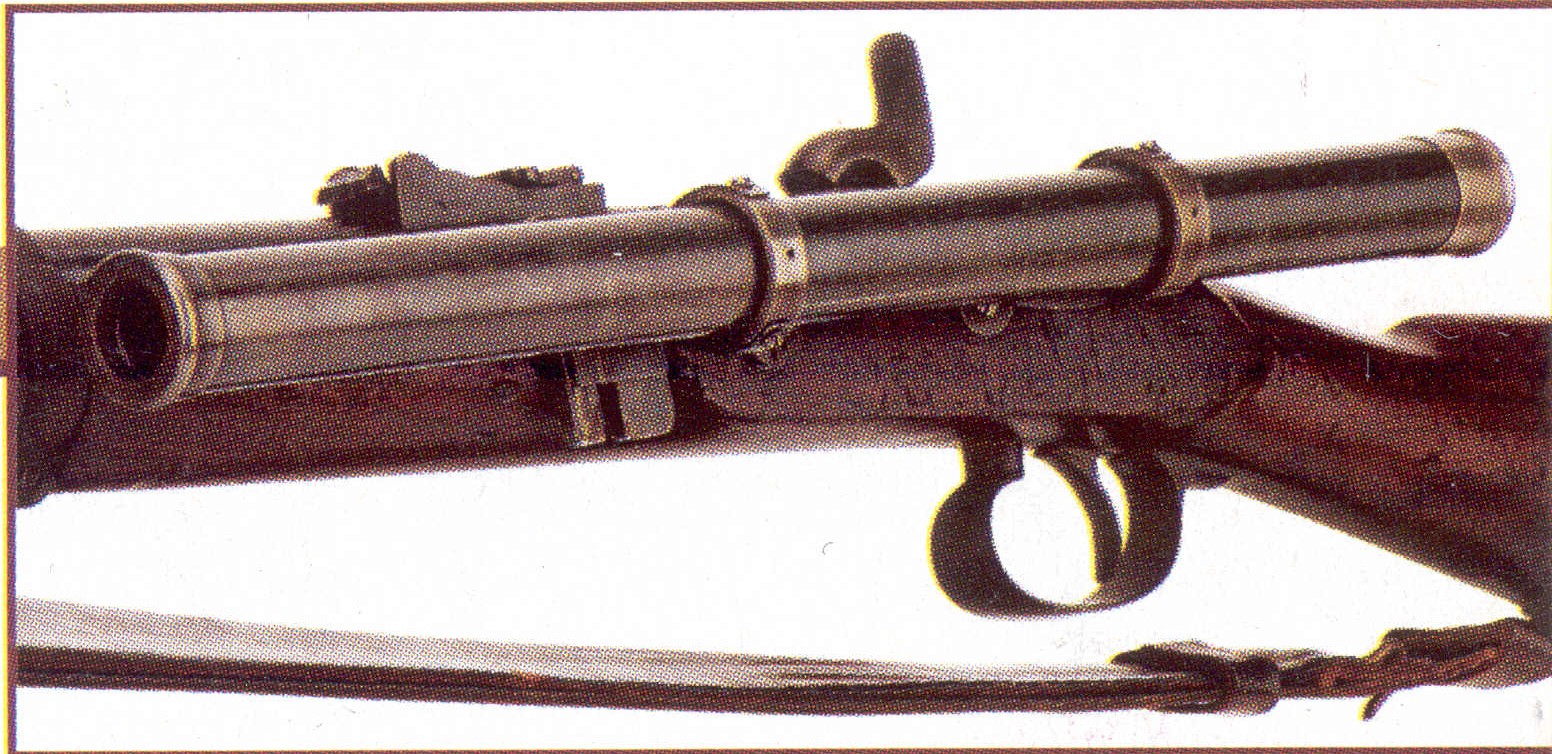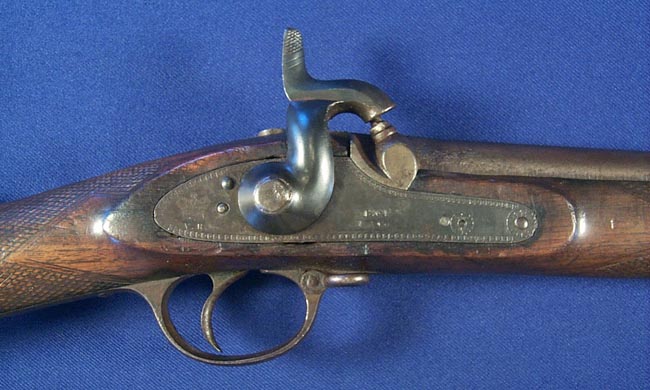

Confederate Whitworth Sharpshooters
I became interested in the Whitworth rifle used by Confederate Sharpshooters and after doing some research, decided to write a short article about what I’ve discovered
The battalion sharpshooters were essentially “light infantry” comparable to
Berdan Sharpshooters, only fewer in number. They served as pickets, scouts, and
advanced skirmishers. Often, they were handpicked men.
The Whitworth and Kerr-armed men were not called “snipers”, they were just
referred to as “Sharpshooters.”
According to the U.S. Army sniper training manual (TC23-l4, Sniper Training and
Employment) the word “sniper” originated in the last century with the British
Army in India where the snipe was a favorite game fowl. A good snipe hunter had
to be an expert shot and know his quarry’s habits.
The Kerr rifle required a special long cylindrical lead bullet, wrapped in paper with a special small-bore rifle powder made in England. British-made cartridges were not easy for the Confederacy to obtain through the Union naval blockade. Even though Kerr rifles were quite accurate at long ranges (1000 yards), they had a fairly high trajectory compared to modern sniper rifles, accurate long range fire required accurate estimation of the range to the target. This could be accomplished by using a stadia, a small hand-held instrument that allowed the shooter to estimate range based on the visual size of a target. These were rarely available, practicing range estimation was the primary training for long range shooting.
In 1860 a company known as the Whitworth Rifle Company was established in
Manchester, England. In May 1862, the firm’s name was changed to the Manchester
Ordnance & Rifle Company, because by then Whitworth had begun producing cannons.
Most rifles were made in .451 caliber and rifled with a 20-inch pitch, but there
are very rare versions with a .564 bore and a 25-inch spiral. The earliest
military Whitworths manufactured in any numbers were those with 39-inch barrels
made for government trials conducted in 1857 and 1858. In 1860 a small number of
two military models, a heavy and a light-barreled version, were prepared at
Enfield and rifled at Manchester. Testing showed superior characteristics and
led the British government to order the production at Enfield in 1862 of 1,000
Whitworths with 36-inch iron barrels. The 1862 Whitworth version was so
successful, another 7,900 rifles, known as “short” Whitworths with 33-inch steel
barrels, were manufactured at Enfield in 1863. During this time, 100 similar
rifles were made by Whitworth at the Manchester Company’s works. These became
known as “Manchester” Whitworths.
The manufacturing process of the Whitworth was very unique. The barrel was cast
into a bar from molten steel and compressed while in a fluid state. The
compression set up internal stresses that allowed the barrel to accept very
powerful loads. The Whitworth was extremely well made, with iron mountings
throughout and an attachment for a telescopic sight mounted on the left side. It
had iron sights graduated to 1200 yards. With a Davidson scope attached it was
accurate up to 1800 yards.
The
Whitworth bore was hexagonal in shape to increase accuracy; a hexagon bullet was
the most accurate. But most Confederates used cylindrical bullets probably due
to supply reasons and because after several shots it became very difficult to
ram a hexagon bullet down the barrel.
General
Specifications of the Whitworth Rifle, Ammunition and Telescopic Sight
Caliber:
.45 (.451, rifled, six-sided, or hexagonal)
Bore:
.450 inches; one turn in twenty inches
Barrel Length:
thirty-three inches, thirty-six, and thirty-nine inches
Rifling:
hexagonal (six grooves, slight rounding at the corners)
Total Rifle Length:
forty-nine inches (some noted at fifty-five inches)
Weight:
(without scope) eight pounds, fifteen ounces (8.95lbs.)
Scope:
(mounted left side) Davidson telescope, fourteen and one-half inches
length,
cross-wire reticule; 145/8” x 15/16”.
Some Whitworth rifles were reported with a “Globe”
sight instead of a telescopic
sight.




An early account of a Whitworth Sharpshooter was written by a surviving
Sharpshooter following the war.
John
West was a Georgian in Lee’s Army of Northern Virginia. Below is an excerpt from
his writings.
“In ‘62 General Lee received thirteen
fine English Whitworth rifles that were warranted to eighteen hundred yards.
These were the best guns in the service on either side. Thirteen of the best
marksmen in the army were detailed for this special service, and I was the only
Georgian that was selected. We were placed under the command General Brown, who
had no other duty than to command us. We were practiced three months before
going into service. A score of every shot was kept during these three months,
and at the end I was 176 shots in the bulls eye ahead of the rest. The last day
of practice in marksmanship was tested by our superior officers. A white board
two feet square with black diamond about the size of an egg in the center was
placed fifteen hundred yards away. The wind was very chilly and it was
unfavorable for good shooting, and I put three bullets in the diamond and seven
in the white of the board. I beat the record and won the choice of horse,
bridle, spurs, gun, revolvers, and sabre. Our accouterments were the best the
army could afford. Then we entered active service, and I have been through
scenes which have tried men’s souls. I soon became indifferent to danger and
inured to hardships and privations. I have killed men from ten paces distance to
a mile. I have no idea how many I killed but I made a good many bite the dust.
We were sometimes employed separately and collectively; sometimes
scouting, then sharpshooting. Our most effective work was in picking off the
officers, silencing batteries and protecting our lines from the enemies
Sharpshooters. Artillerymen could
stand anything better than they could sharpshooting, and they would turn their
guns upon a Sharpshooter as quick as they would upon a battery. You see, we
could pick off their gunners so easily. Myself and a comrade completely silenced
a battery of six guns in less than two hours on one occasion. The battery was
then stormed and captured. I heard General Lee say he would rather have those
thirteen sharpshooters than any regiment in the army. We frequently resorted to
various artifices in our warfare. Sometimes we would climb a tree and pin leaves
all over our clothes to keep their color from betraying us. When two of us would
be together and a Yankee Sharpshooter would be trying to get a shot at us, one
of us would put his hat on a ramrod and poke it up from behind the object that
concealed and protected us, and when the Yankee showed his head to shoot at the
hat, the other one would put a bullet through his head. I have shot them out of
trees and seen them fall like coons. When we were in grass or grain we would
fire and fall over and roll several yards from the spot whence we fired and the
Yankee sharpshooters would fire away at the smoke.”
The Confederate Whitworth Sharpshooters claimed they killed many Yankee Sharpshooters and didn’t seem to hold Berdan’s in very high regard. It seems they resented all the attention the Berdan’s were getting in the northern press and claimed that Yankee Sharpshooters killed very few Whitworth men and were not as “good shots” as they were.